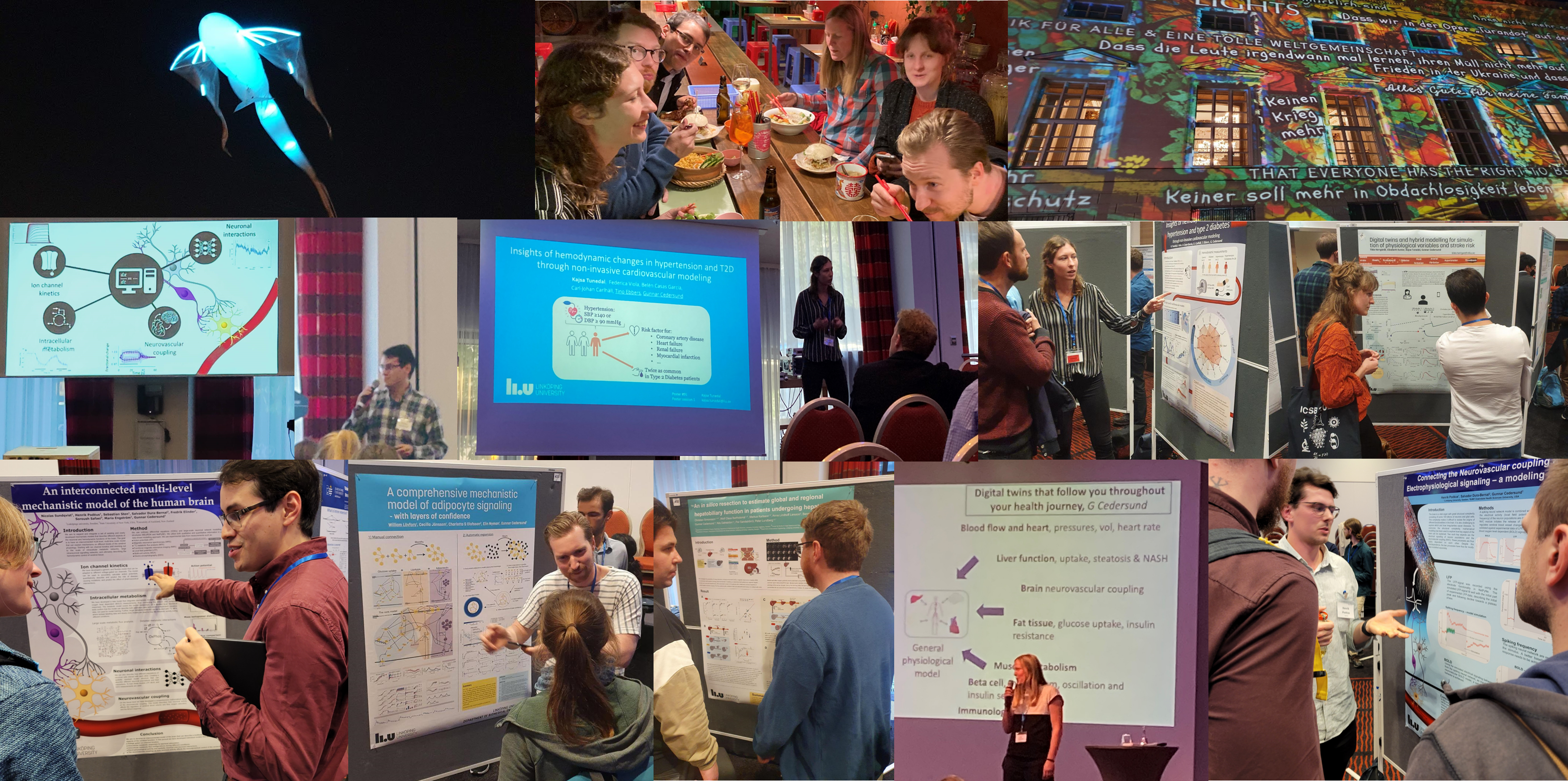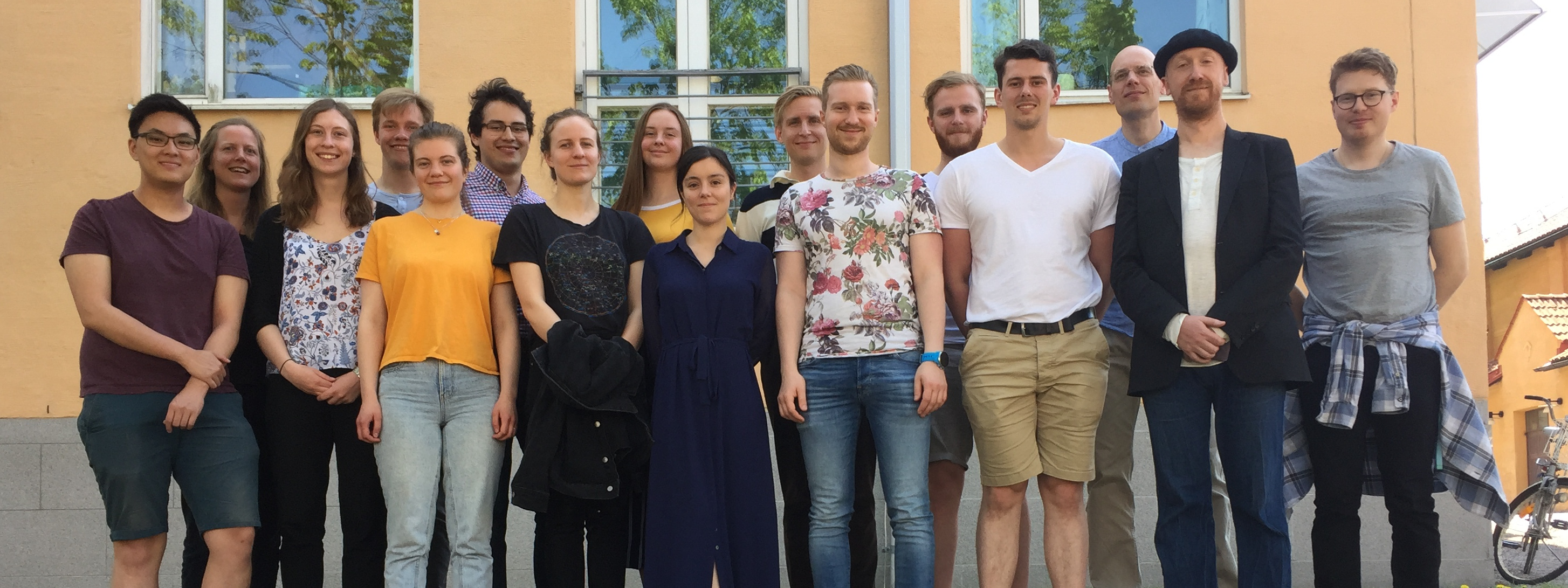The 21st International Conference on Systems Biology (ICSB 2022) was held in Berlin, Germany, these past few days. We had a great time there and had the opportunity to meet great people, take part in interesting discussions, and see some of Berlin. During the conference, we presented several posters and gave some talks (summarized below). We would like to extend our thanks to the ICSB committee for a well-organized conference. Until next time, from the ISB group.

The full program can be found here: https://www.icsb2022.berlin/, and down below is a summary of our contributions.
M4-health: digital twins that follow you throughout your health journey, Gunnar Cedersund
Authors: Gunnar Cedersund
An interconnected multi-level mechanistic model of the human brain, Nicolas Sundqvist
Authors: Nicolas Sundqvist, Henrik Podéus, Malin Ejneby Silverå, Sebastian Sten, Salvador Dura-Bernal, Soroush Safaei, Maria Engström and Gunnar Cedersund
Digital twins and hybrid modelling for simulation of physiological variables and stroke risk, Tilda Herrgårdh
Authors: Tilda Herrgårdh, Elizabeth Hunter, Kajsa Tunedal, John D. Kelleher and Gunnar Cedersund
Insights on hemodynamic changes in hypertension and T2D through non-invasive cardiovascular modeling, Kajsa Tunedal
Authors: Kajsa Tunedal, Carl-Johan Carlhäll, Federica Viola, Tino Ebbers and Gunnar Cedersund
Mathematical modeling of cytokine interplay in human monocytes during LPS stimulation, Niloofar Nikaein
Authors: Niloofar Nikaein, Kedeye Tuerxun, Daniel Eklund, Alexander Persson, Robert Kruse, Eva Särndahl, Eewa Nånberg, Antje Thonig, Gunnar Cedersund, Elin Nyman, Dirk Repsilber and On Behalf Of The X-Hide Consortium
Connecting the Neurovascular coupling and Electrophysiological signaling – a modeling approach, Henrik Podéus
Authors: Henrik Podéus, Gunnar Cedersund and Salvador Dura-Bernal
An in silico resection to estimate global and regional hepatobiliary function in patients undergoing hepatectomy, Christian Simonsson
Authors: Christian Simonsson, Wolf Claus Bartholomä, Anna Lindhoff Larsson, Markus Karlsson, Bengt Norén, Gunnar Cedersund, Nils Dahlström, Per Sandström and Peter Lundberg
A comprehensive mechanistic model of adipocyte signaling with layers of confidence, William Lövfors
Authors: William Lövfors, Cecilia Jönsson, Charlotta S. Olofsson, Gunnar Cedersund and Elin Nyman







